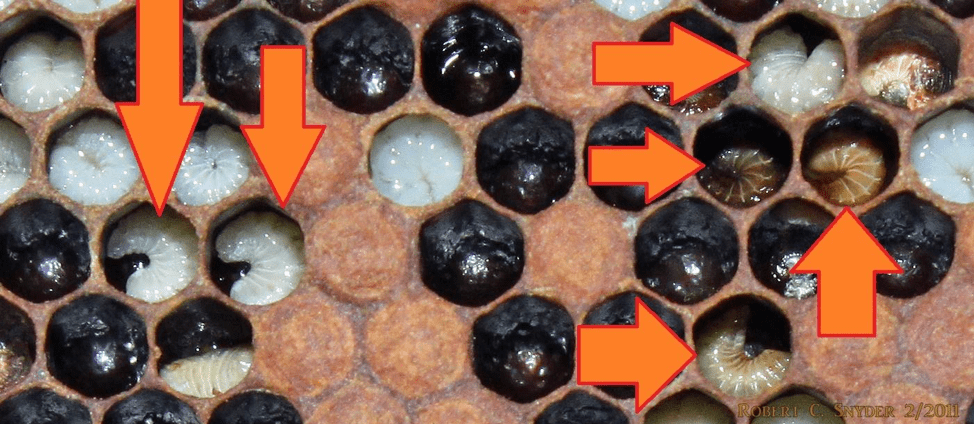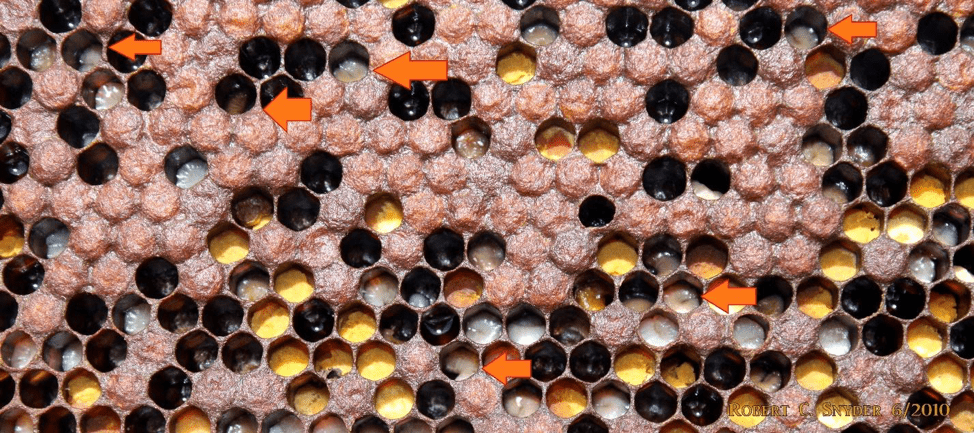In Northern California this past spring, colony growth was slow due to the cooler weather. So slow in fact, that most Queen Producers started breeding up to a month late! Additionally, the numerous fungicide applications in the orchards accumulating on forage, may have been another factor impacting colony health and growth. The conditions were so wet this year, growers had to apply more aerial sprays to control fungus. Most of these sprays were performed during the daytime and most likely increase bee exposure to fungicides, especially in standing watering holes for bees, where pesticides may be present at higher levels.
A week or so into the bloom we started seeing signs of EFB in many operations. The causes of EFB outbreaks are complex in nature, but according to our observations from the past 8 years, it seems that wet pollination conditions in almonds could be used as an indicator to predict the prevalence of the disease.
In reaction to what we were seeing in the field, I put together a few pictures of early stages of EFB and sent messages to beekeepers in the Tech Team Program to keep an eye out for spotty patterns and signs of EFB and be prepared to treat if signs developed. Beekeepers who treated were happy with the outcome and overall colony health compared to those who didn’t and followed weaker colonies well into the summer. It is sometimes difficult to put a price tag on the savings our services translate into, but we know they can be significant. Please help us continue to support the commercial beekeepers nationwide and DONATE today!

